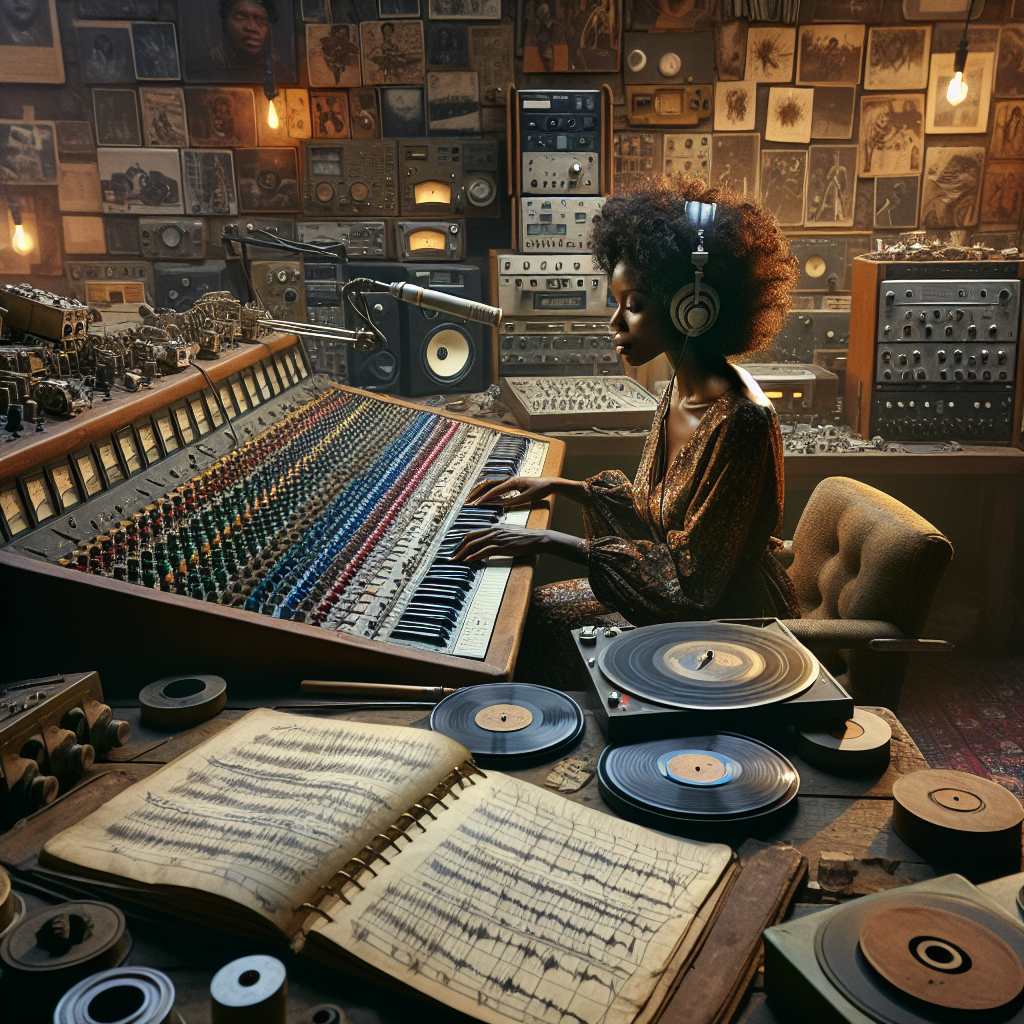If you’ve ever wondered how producers make those insane bass drops, dreamy pads, or sparkly synths from scratch — you’re in the right place. That magic is called sound design, and it’s a core part of modern music production.
Whether you’re just starting out or looking to move beyond presets, this post breaks down what sound design is, why it matters, and how you can start using it today — even if you’re new to music production.

What is Sound Design?
Sound design is the process of creating and shaping sounds using tools like synthesizers, samplers, and effects. Instead of just using pre-made sounds (like drum loops or synth presets), sound designers build their own from scratch or tweak existing ones to make them unique.
Think of it like this:
- Using a preset is like ordering fast food.
- Sound design is like cooking your own meal — you choose the ingredients and flavors.
Why Should You Care About Sound Design?
Even if you’re a beginner, sound design is worth learning because:
1. It Makes Your Music Stand Out
Everyone has access to the same presets. Making your own sounds gives your music a personal identity — and people notice that.
2. It Builds Your Skills
Understanding how sounds are made helps you mix better, choose the right instruments, and fix problems in your tracks faster.
3. It’s Super Creative (and Fun)
There’s nothing like designing a sound that gives you goosebumps. It’s one of the most satisfying parts of producing music.
Tools You’ll Use for Sound Design
You don’t need a fancy studio or tons of gear. Here’s what you’ll use:
Synthesizers
A synth is a tool that generates sound. Some good ones for beginners:
- Serum (industry standard, but paid)
- Vital (free and powerful)
- Synths built into your DAW (like Ableton’s Analog or FL Studio’s 3xOSC)
Samplers
Samplers play and manipulate audio files. You can:
- Chop vocals
- Play drum one-shots
- Twist recordings into cool effects
Examples: Ableton Simpler, Logic Sampler, FL Studio’s DirectWave
Effects
These change how your sound behaves. Some common ones:
- Reverb – makes it sound like it’s in a space (room, hall, etc.)
- Delay – creates echoes
- EQ – shapes the frequencies (like bass, mids, treble)
- Distortion/Saturation – adds grit or warmth
Core Concepts (Explained Simply)
Here are the sound design basics you’ll hear a lot, broken down:
1. Oscillators
These are the building blocks of a synth. They generate waveforms (sound shapes) like:
- Sine = smooth and pure (good for sub-bass)
- Square = buzzy, hollow
- Saw = bright and rich
- Noise = static-y, good for FX and hi-hats
2. Filters
Filters remove certain parts of a sound.
- Low-pass lets bass through, cuts highs
- High-pass lets highs through, cuts lows
3. Envelopes (ADSR)
They control how your sound moves over time:
- Attack – how fast the sound starts
- Decay – how fast it dips down
- Sustain – how loud it stays while holding a key
- Release – how long it fades out after letting go
Example: A pad has a slow attack and long release, while a pluck has a fast attack and short release.
4. LFO (Low-Frequency Oscillator)
This is like an automatic knob-turner. It can change things over time — like wobbly bass or tremolo effects.
Beginner-Friendly Sound Design Tips
Here’s how to get started without getting overwhelmed:
Start Simple
Pick one synth (like Vital or a stock one in your DAW) and learn how it works. Tweak presets instead of starting from scratch at first.
Use Your Ears, Not Just Your Eyes
Don’t worry about making it look right — go by how it sounds.
Make One Sound a Day
Try designing one sound each day: a bass, a pad, a lead, a kick. This builds confidence fast.
Save Your Presets
Once you create something you like, save it! Over time, you’ll build your own custom sound library.
Example Sounds You Can Try Making
Want to get hands-on? Try these starter sound ideas:
| Sound Type | Quick Recipe |
| Sub Bass | Sine wave + short attack + no release |
| Pluck Lead | Saw wave + low sustain + short decay |
| Ambient Pad | Saw + square wave + slow attack + big reverb |
| Wobble Bass | Square wave + LFO on filter cutoff |
Learning Resources (Beginner-Friendly)
- YouTube Channels: Venus Theory, In The Mix, Slynk, You Suck at Producing
- Courses: Syntorial (interactive synth trainer), Skillshare sound design courses
- Free Synths to Play With:
- Vital Synth
- Helm
- Vital Synth
Final Thoughts
You don’t need to be a pro to start sound designing. In fact, some of the best ideas come from beginners messing around and breaking the rules. Just start small, stay curious, and experiment every time you open your DAW.
Remember: Presets are fine, but your own sounds are fire.